The road to us is eternal glory! Part one
The defense of Azov in 1641, by the Don Cossacks, as well as the battle of the Young in 1572, is one of the significant military events in stories Russia. For three months, a handful of brave men stood to death against the huge army of the mightiest state of the then world, engaging in an almost hopeless fight for them only for the honor of great and eternal glory!
We took Azov by our will!
Azov was founded more than two and a half thousand years ago by Greek colonists, and bore the name Tanais. Under Genoa rule in the 13-15 centuries, the city reached its peak. Along with the Crimean Kaffa, the Italian colony of Tana became one of the centers of the slave trade in the Northern Black Sea region. In 1471, Azov captured the Turks, turning it into a powerful citadel controlling Lower Don and the North Caucasus. By the middle of the 17 century, the Azov fortress consisted of three parts: Toprakov town (Toprak-Kala - Earthen city), Tashkalova town (Tash-Kala - Stone city) and, in fact, Azov. The main citadel had stone walls and 11 towers. The outskirts of the city were covered with ramparts and girdled by moats. The garrison of the fortress consisted of 3 thousands of soldiers of regular Turkish infantry at 200 various guns. In the event of a siege, more than 1000 militias recruited from local residents joined the troops. The main task assigned to the garrison of Azov was to protect the rear areas of the Crimean Khanate and prevent the penetration of the Don Cossacks into the Black Sea, at that time the inland sea of the Turkish Empire. For the obstacles of free navigation across the Don, iron chains were stretched from shore to shore, most of the Don estuary was shot from the walls of the fortress with artillery fire.
Azov has long served as a base for the Turkish and Crimean troops who raided the Russian lands. For example, it was from there in the year 1569 that the hundred-thousand Ottoman army set out on its infamous “liberation campaign” against Astrakhan. The enemy fortress served as a constant irritant for the Cossacks, for centuries the people of Azov and the Donians were in a state of permanent war. However, there were practically no major clashes, both sides were limited to small raids, robberies of rural settlements and the hijacking of livestock, which did not prevent the worst enemies from engaging in mutually beneficial trade.
The idea of conquering Azov had long been strolling among the Cossacks, since the successful implementation of the plan could give good dividends: in case of a fall of the fortress, the Don Cossacks opened free access to the Sea of Azov, it was easier to communicate by water with their Cossack brothers; Yes, and the very idea of organizing the Cossack capital in a well-fortified place seemed quite attractive to many. Back in 1635, the Cossacks wrote to the Moscow government that “if the Sovereign had commanded us to take Azov, then Christian blood would not flow, the Orthodox would not have exhausted the Basurman in slavery and it was not difficult to subdue the Crimea and foot”. Well, and the reason for conquering the fortress is chosen good - the liberation of Orthodox co-religionists from basurmansky slavery. However, the Cossacks themselves did not disdain the slave trade, but such an ideological rationale for the war reliably provided moral support not only for Moscow, but also for the Christian population of Crimea, the North Caucasus, and in Azov itself it was possible to count on the sympathies of the Orthodox Greeks - the indigenous inhabitants of the city.
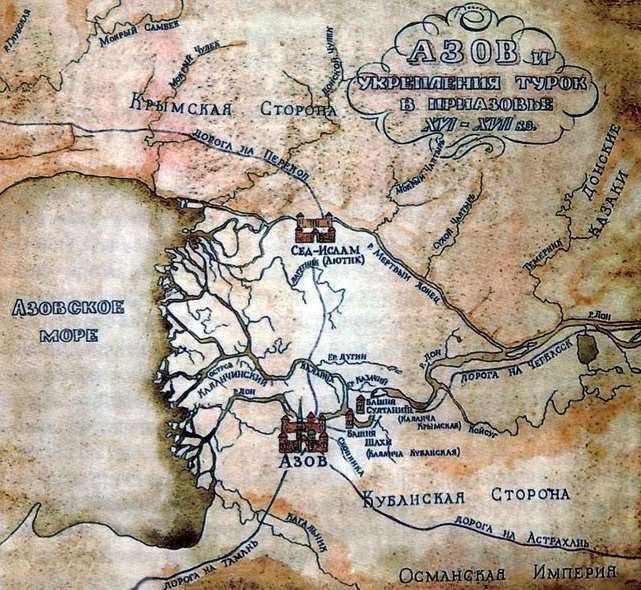
Fig. Map of the Azov region 16-17 century
However, it was not possible to quickly accomplish what was intended, in 1636, the Cossacks were thoroughly bogged down in the war with the Nogais, on the orders of the tsar's administration, “pacifying” the rebellious uluses. By winter, the war was over, and the capture of Azov ceased to be just a dream. In the coming 1637, the situation on the Don favored the Cossacks. The most combat-ready units of the Turkish army laid siege to Baghdad, the Crimeans quarreled with the Nogai and Akermanian Tatars and entered into an internecine quarrel. At this time, Moscow began to build up a grouping of its troops on the borders of the Wild Field, 25 March, 1637, the Strelets Regiment of Stolnik Buturlin arrived from Russia on the southern border line. Russian troops, having built a temporary camp near Oskol, hastily began to erect fortifications on the Izyum and Kalmiussk routes, which temporarily distracted the Turks and Tatars from the Cossack vanity near Azov.
However, to wage war with a serious opponent, with which the Turkish garrison of the Azov fortress was, the Don Army still did not have enough weapons, gunpowder and other equipment. As the Cossack foremen wrote in the next “teardrop” to the tsar and the boyar Duma, that “we do not receive any salaries, we die of starvation, naked, barefoot and hungry, and there is no place to take, except your state mercy, but we have lead and nuclei, and there is no potion. " To agree on the issue of salary and allocation of supplies, 21 in November 1636, the marching stanitsa Ataman Ivan Katorzhny, a number in 37 people, went to Moscow.
The Cossacks did not conduct a direct conversation about Azov with the tsarist government, but the boyar Duma apparently received some information about the impending attack. The Bukolov interpreter was urgently sent to Istanbul with letters of acknowledgment in which the king had complained beforehand about the “assurance of the wretched Azov people”. At the same time, the Moscow government completely disowned the last year’s sea raid of the Don Cossacks on the Crimean coast, putting all the blame for it on the “robbers of the Zaporozhian Cossacks Sulyma”. Naturally, having received such a rather strange message, and, moreover, brought by a diplomat of the lowest rank, the Turks were alerted. The Grand Vizier Mohammed Pasha immediately sent his best agent, the Greek Thomas Toma Kantakuzin, to the Moscow court. However, the main purpose of his trip was the task of scouting the situation and moods of the Don Cossacks.
Under the then Moscow diplomatic protocol, the arriving foreign ambassadors were to be met by a government bailiff and accompany them to the royal court. In order not to sit at the border for a long time, the envoys sent credentials in advance to the department dealing with foreign powers. Knowing perfectly well that there would be no answer from Moscow earlier than May, the Turkish envoy arrived at the Don 1637 in February. The diplomat did not spend the winter in Azov, but came to the monastic town and settled among the Cossacks. Kantakuzin bribes and promises tried to persuade the Cossack elite to cooperate with Turkey. The chronicle says that “having arrived on the Don, Thomas sent to tell the Cossacks that the sultan had sent them a salary, an 4 caftan; The Cossacks replied: “Before, ambassadors and envoys were sent to the great sovereign from the Sultan often, but they did not bring anything to us, the Cossacks, from the Sultan; it is clear that he, Thomas, is up to it by himself and gives us caftans from himself. " An attempt to bribe a military foreman by a clever Greek was started at the right time: Tsar Mikhail capitulated to the Poles, fearing the Tatars, which is why the victorious Turkish forces defeated the Persians in the south, and just about take Baghdad. The proposed cooperation of the Cossacks with Istanbul promised both sides attractive tempting prospects. But the Don Army had other plans.
In the same February, the Cossacks sent 1637 to all the villages and towns to come to the council, however, this time the turnout was optional, as the letters expressly stated that there would be no reprisals for the “non-volunteers”. 9 April 1637 Cossack circle gathered in the monastic churchyard. It was unanimously decided not to go to the sea this year, to go to the whole world to mine Azov. With the total list strength of the Don Cossacks around 14 thousand people, only about 4 thousands of fighters could take to seize the fortress, there was clearly not enough strength for a successful assault on the powerful fortifications of Azov. Help came unexpectedly: a thousand stanitsa of the Cossacks came to Ukraine from the Don, who were going to serve in Persia. The Donets accepted them with open arms and persuaded to take part in the planned action. Hurried preparations for the performance began in the Don towns. No matter how the Cossacks tried to hide the true purpose of the march, Thomas Kantakuzin received information that he was preparing not an ordinary foray into the Turkish shores, but something more. To inform Azov about the impending raid, Kantakuzin invented an original way. The forest is a scarce product in the Pridonya steppe zone, and the Turkish agent ordered his servants to cut messages to the commandant of the Kalash-Pasha fortress with a warning about threatening the city on logs and then throw them into the Don, knowing for certain that the zealous Azovs would not miss the gift that sailed to them . The message reached the addressee, but the Turkish commander did not take serious measures to organize the defense.
19 April 1637, the Don Army, led by ataman Mikhail Ivanovich Tatarinov, moved to Azov. Part of the troops moved on struga, the other - on horseback, along the coast. To protect the flanks from the attacks of the Crimean Tatars and Nogais, strong cavalry units were sent far into the steppe. 21 April advanced regiments approached Azov. Counting on surprise, the Cossacks on the move tried to seize the fortress. However, the Turks warned by Kantakouzin, as the chronicler reports, “lined up in readiness with flags and weapons on the walls”. The unprepared assault ended with the complete defeat of the Cossack units, the Cossacks lost about 300 people killed and wounded.
A cool-blooded and clever ataman Tatarinov, who arrived to Azov a day later, decided to take the city with a regular siege, taking it into a tight ring and blocking all entrances and exits. For three weeks, the Cossacks dug trenches, made fortifications of fascines and baskets with earth, prepared for digging under the walls with complete passivity of the Turkish garrison. In general, the behavior of the commandant of Azov in this situation looks more than strange. Having 200 serviceable tools against 94 falconet donts, the Turks did not render any fire resistance to siege preparations. Perhaps Kalash-Pasha was sure of the reliability of his walls, the number and strength of the garrison, but most likely he was counting on a deblocking blow from Taman or the Crimea. His aspirations were justified, having received information about the beginning of the war, the four-thousandth detachment of the Turkish-Tatar army set off to the rescue of Azov, as Tatarinov was immediately informed by intelligence.
The hastily formed cavalry regiment moved from the walls of the fortress towards the enemy. The 20 of May in the fierce battle on the Kagalnik River was an Ottoman army that outnumbered the Cossack army by more than 4 times, until the last man was destroyed, but the Don soldiers suffered such losses that it was unreal to take the fortress with the remaining forces. Confusion and despondency reigned in the camp of the besiegers, there was talk that Azov could not be taken, it was time to disperse between the smokers.
Fortunately, 28 May returned to the Don village of Ivan Katorzhny, bringing the royal salary: gunpowder, lead, fifty cannonballs, cloth and 2 thousands of rubles. With a convict arrived, one and a half thousand volunteers recruited in Russia, who were promised admission to the Don Army. Receiving badly needed supplies and numerous replenishment noticeably strengthened the morale of the Cossack army and set it up for decisive action.
Tsarist police officer Stepan Chirikov, who arrived with Ivan Katorzhny, presented a letter to the atamans of the Don, which stated that the king categorically “punishes not to fight with Azov, not to go to sea. Thomas Kantakuzin escorted by the bailiff to Moscow. Of course, among the Cossack leadership was the question: what to do next? The Siege of Azov was launched against the royal will. It was impossible to refer to the fact that the Azovs were the first to attack, if there was a living witness in the Monastery town, a Turkish ambassador. And if Moscow quarrels with Istanbul because of this, the Don liberty will not have to be sweet. The best way to get rid of an undesirable witness is to silence him forever. One of the reasons for the liquidation of the Turkish diplomat could be evidence of his espionage activities. Whether people were actually caught from his retinue with letters to the Temryuk and Kerch administrations with intelligence information or an interested party was arranged a clever re-enactment, it is not known, but the life of the unfortunate Greek, now officially declared a Turkish spy, hung in the balance.
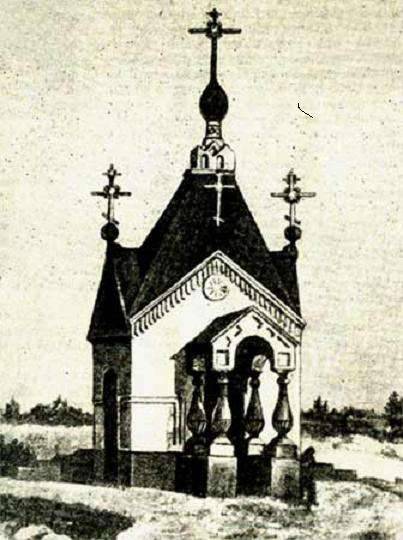
Fig. Chapel of the monastic town
In the meantime, having distributed his salary and supplies, the police officer Chirikov demanded that the Cossack commander immediately deliver Thomas Kantakuzin to himself, but Tatarinov replied that “Fomka is not the ambassador, but a spy” and is in custody. Perhaps the cautious and farsighted ataman decided to bargain with Moscow, holding the Turkish diplomat as a bargaining figure in future difficult negotiations about the Azov incident, but a case intervened in further developments. A translator from the entourage of the Turkish envoy, a certain Asanka, who attended the funeral of the dead Cossacks near the chapel of the monastic town, joked evilly, saying that “the Cossacks are now being killed with a scoop (a small boat), and soon will be hauled (with big barges)”. For the beginning of the spontaneous rebellion, the Don pits, angry at the heavy losses, of the stinging remark, abandoned by a careless Turk, were enough. As a result of the pogrom, the ill-fated Asanka, Thomas Kantakuzin and his entire retinue, including Greek monks, were killed.
Only the royal interpreter Bukolov, who was in the church during the massacre arranged by the Cossacks, escaped by chance from the ambassador. Subsequently, the central government learned from him the whole truth about the events on the Don, which put the Moscow state on the brink of a big war with Turkey and the Crimea.
Meanwhile, the siege of Azov went on as usual. The Cossacks, who received a large supply of gunpowder from Chirikov, decided to make a tunnel and bring a mine under the wall. Sapery works were led by a certain “Nemchin Yugan Ardanov”, who turned out to be a very competent engineer. Early in the morning of June 18, an explosion of four barrels of gunpowder laid by Ardanov in the tunnel had completely destroyed the fortress wall 20 meters. Cossacks, in the front ranks of which brave Cossacks led by chieftain Tatarinov walked, rushed into the breach. When the wall collapsed, the Turkish commander-in-chief with the entire headquarters perished. But, despite the death of the leadership, the headless Azov garrison offered serious resistance. Started a fierce melee. People cut each other with sabers, fired guns and pistols at close range, knives went into action in crowded streets. It is not known by whom the city was set on fire. Because of the powder smoke and the soot of the fire, the opponents barely saw each other. "And in that smoke there was a great cut, they grabbed each other by the hands and were cut with knives, and the shooting went on until evening." For a whole day, the janissaries and the local militia, deprived of centralized command, stood to death, especially the Cossacks were stormed by stone towers defended by strong units in 40 - 50 people. Realizing that the city did not hold, waiting for darkness, the remnants of the garrison went on a breakthrough. Having gathered all the forces into a fist, the Turks dared the Cossack detachments that stood in their way, broke out of the burning city and went into the steppe. But there the exhausted demoralized people were already waiting for the Cossack cavalry ...
Azov fell. Thousand and four hundred Don and Ukrainian Cossacks paid for his capture with their lives. The fortress was severely destroyed by fire and explosion, residential areas were particularly affected by the fire. The city has undergone a total plunder by the winners. The Don Army took large trophies, including more than a hundred surviving Turkish cannons, nuclei, lead, provisions. Some historians point out that the Cossacks massacred the Muslim population of the fortress without exception, but then for what purpose in the autumn of 1637 did two Turkish ships come to Azov for ransom for the captured citizens?
With the capture of Azov, the Don Cossacks struck a gap in the northeastern wing of the Ottoman Empire. The Black Sea has ceased to be the inland sea of Turkey. In addition, the loss of a strong strategic point significantly reduced the influence of the Turks in the North Caucasus region and the Crimea. Of course, Istanbul could not come to terms with such a loss, but because of the continuing fifteenth year of war with Iran and the preparation of the invasion of Malta, the Brilliant Port did not have enough strength at hand to return the fortress under the authority of the Sultan. The Ottoman administration could not even give an order to the Crimeans and the Nogai to recapture Azov, until the Cossacks strengthened it thoroughly: the internecine war for power in the Crimean Khanate was in full swing. The only thing that the Turkish government could do in this situation was to send an angry letter to Tsar Mikhail asking to influence the presumptuous Don.
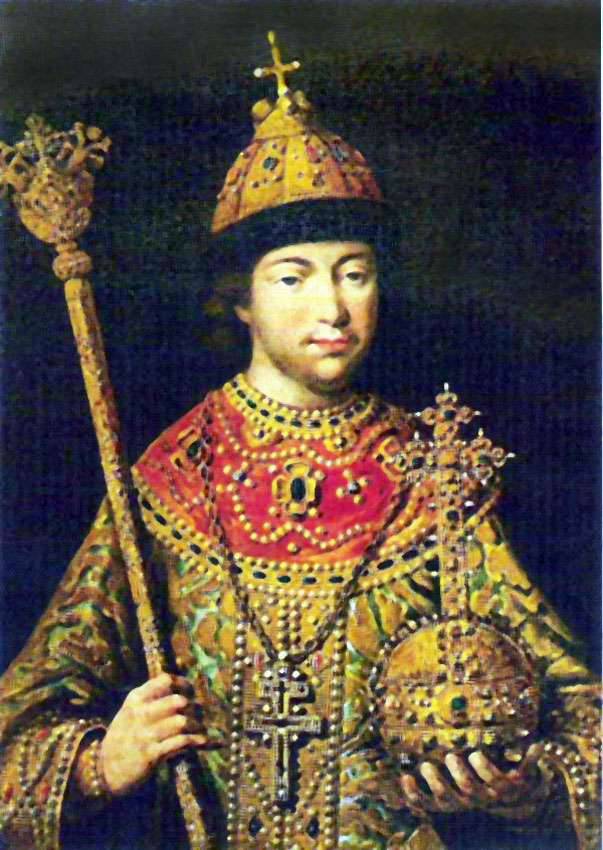
Fig. Tsar Mikhail Romanov
Caught in the face of their official ally in an unpleasant position, the king and the Duma thought up a brilliant diplomatic dodge, deciding to show their utter non-participation and misunderstanding of the essence of the problem, which was indicated in the response message. It is interesting that in the document, besides the stereotypical iremiah, about the self-will of the Crimean Khan, there was also a complaint directly about the Cossacks themselves, they say, “Don Cossacks have long been thieves, runaway serfs and the royal orders do not listen to anything, but they cannot send rati to them because far places. And that the Cossacks killed your envoy and Azov: they did it without our command, with self-will, and we don’t stand for such thieves, and we don’t want to quarrel for them, although they are thieves to be beaten. ” In a word, the whole meaning of this wise epistle could be conveyed by two sentences: Moscow is not in the business. Deal with your problem yourself, and we wash our hands.
3 September 1637 went to Moscow Ataman Potap Petrov with a detailed report on the events on the Don and the capture of Azov. The sovereign Mikhail Fedorovich was in an awkward position: to take Azov under the arm of the Moscow sovereign, which the Cossacks insistently demanded, meant a violation of a peace treaty with formally allied Turkey and in the long term get a big war, but it was impossible to just refuse such a gift. The boyar Trofim Mikhnev was urgently sent to Azov not only with the sovereign’s angry official letter, but also with a secret mission to investigate the situation and explore the conquered city and fortress. Serious imperial disfavor threatened voluntary-willed Donts, but to their good fortune in the middle of September, the Crimean Tatars Badyr-Girey unexpectedly attacked the sweep line and the city of Oskol. Of course, after the losses incurred in the storming of the fortress and the departure of the Zaporozhian Cossacks to Ukraine, where the next uprising flared up, the Cossacks no longer had the strength to prevent the Tatar invasion. However, they sent a letter to the king, in which they notified that, despite the royal disgrace, the whole army had marched against the Tatars. In fact, only a few reinforced horse trips were sent to the steppe, and all of the Don Army remained in Azov, where they quickly repaired the destroyed walls and strengthened the ramparts. The deception, of course, was revealed by Mikhnev, as he reported to Moscow. However, his report was ignored, since the Crimeans, having heard about some strange Cossack activity in their rear, and even having suffered defeat from the Moscow troops in the battle of Yablonovaya Prison, quickly rolled away from the zasechnaya line back to the steppe. In the autumn and winter, good news came from the southern borders of Russia to the capital: the governors unanimously informed the Tsar that with the seizure of the Azov people by the Donets, the pressure of the steppe dwellers on the serf line abruptly weakened. The Moscow administration realized that the Tatars, because of Azov, now have no time for campaigning against Russia, gave up on Cossack mischief and sent two hundred pounds of gunpowder, one hundred fifty pounds of lead, salary and veiled forgiveness to the Don, ordering Don Army, if Crimeans again attacked on the Russian lands, go hiking on hostile uluses.
Продолжение следует ...
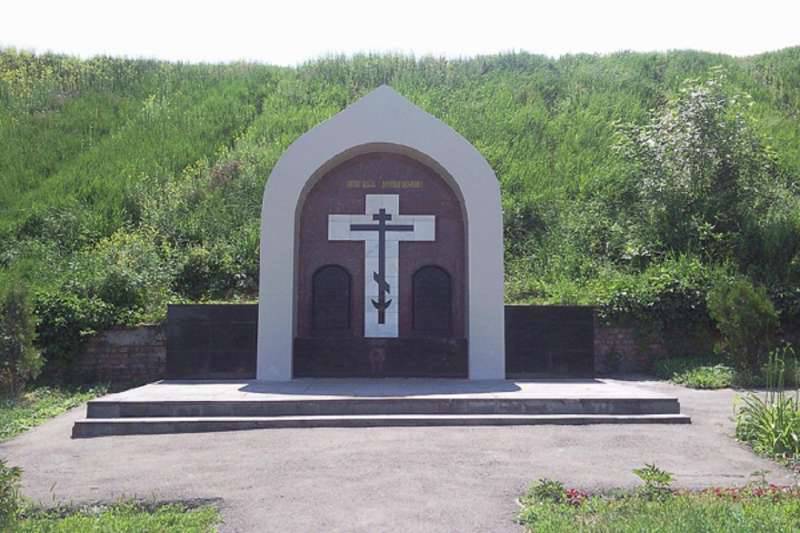
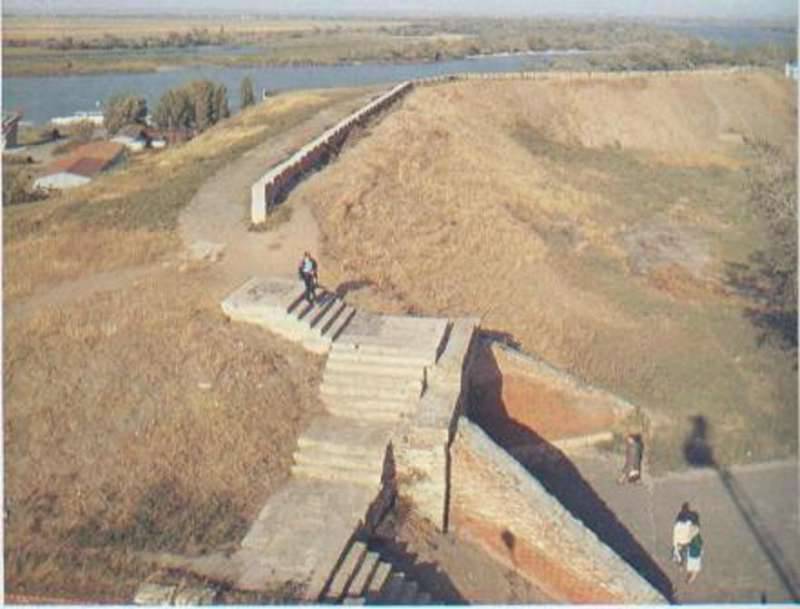
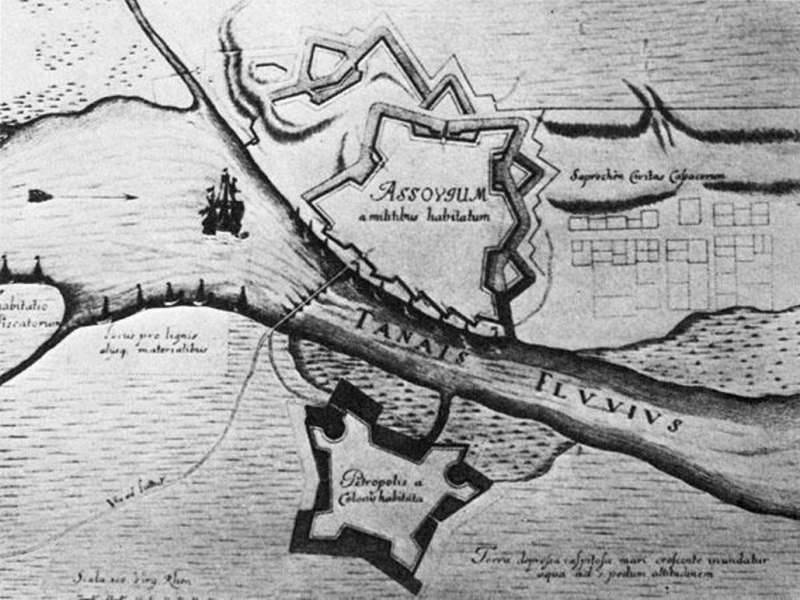
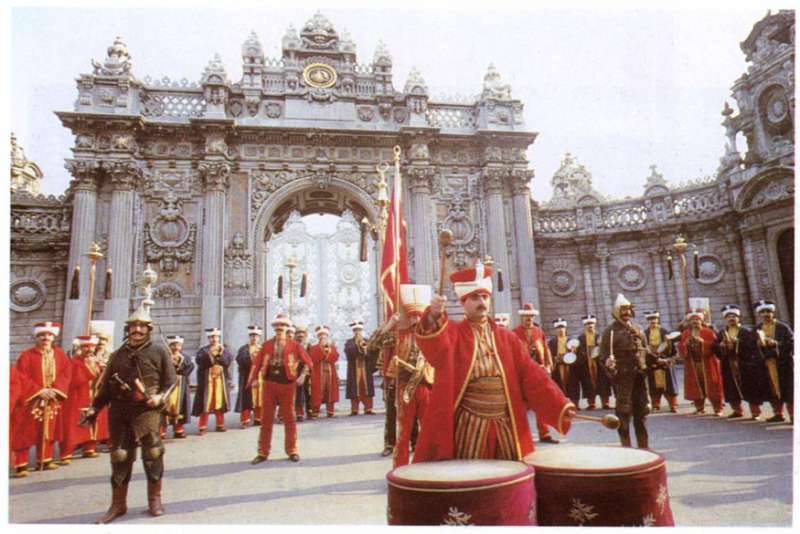
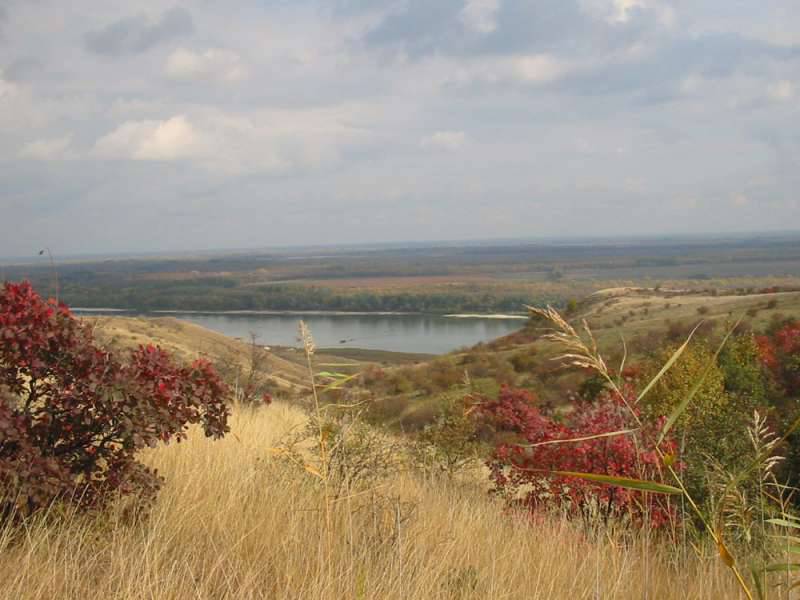
Information